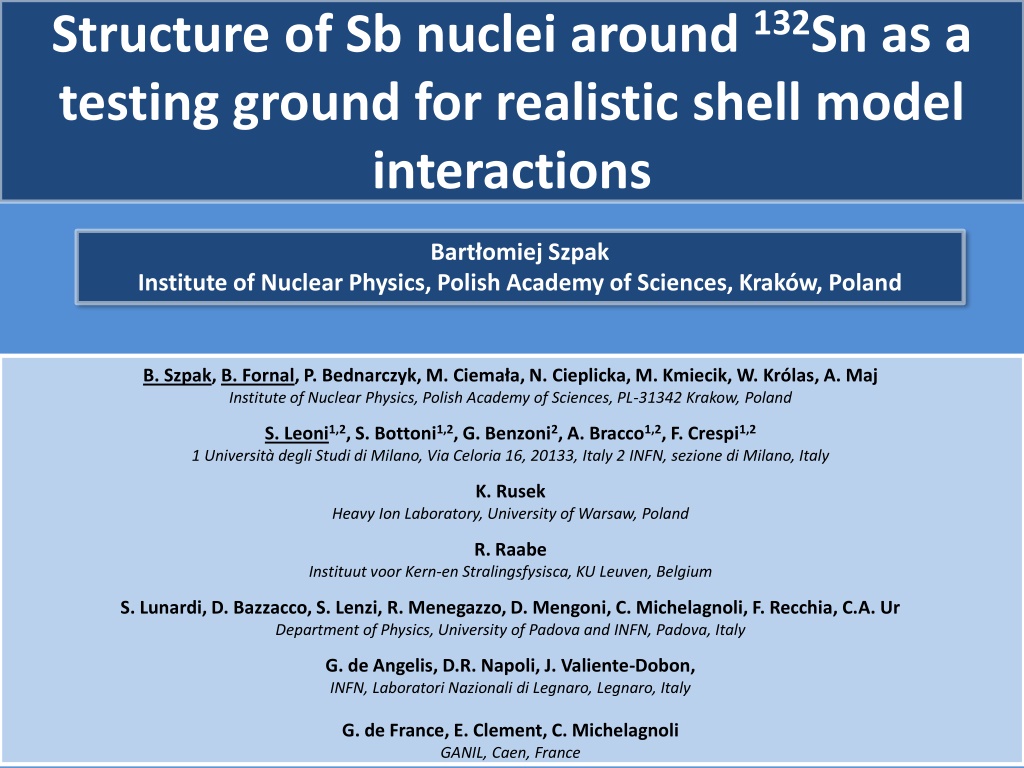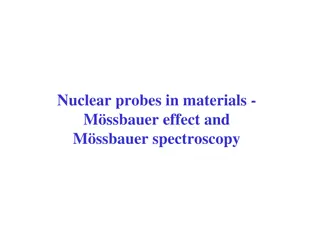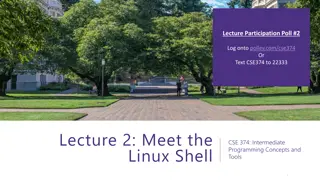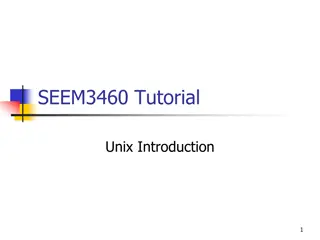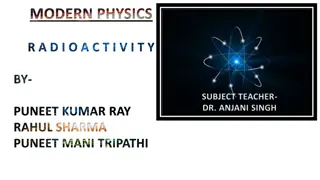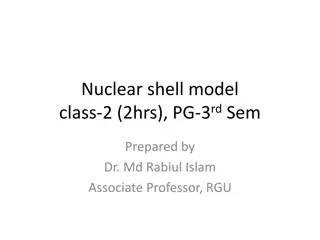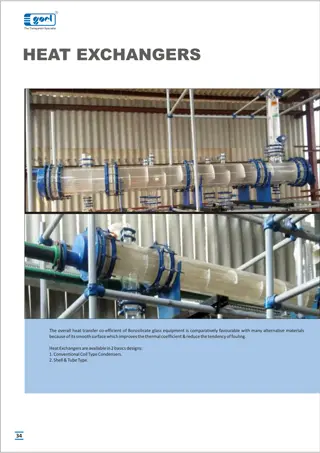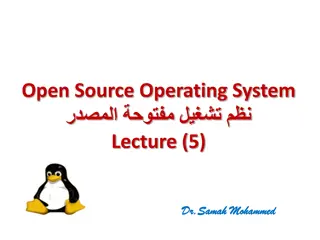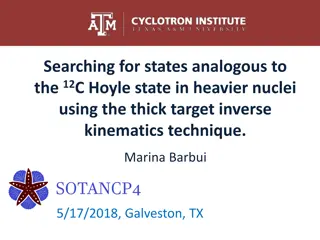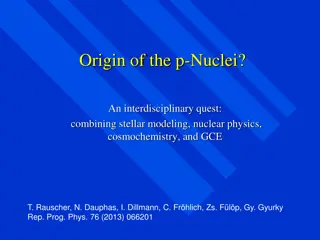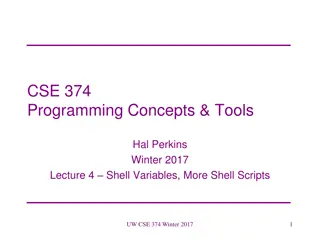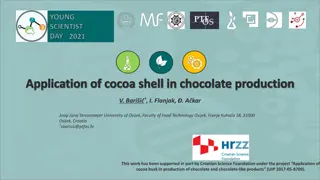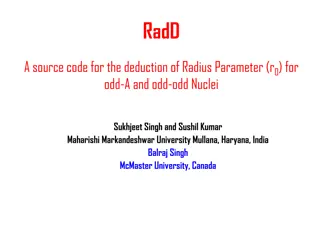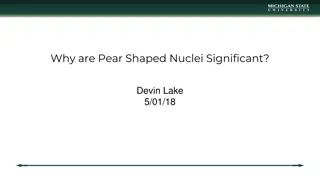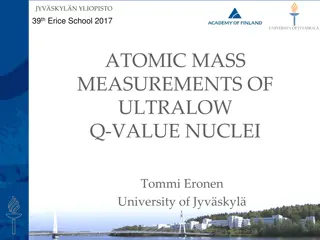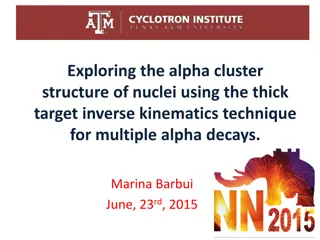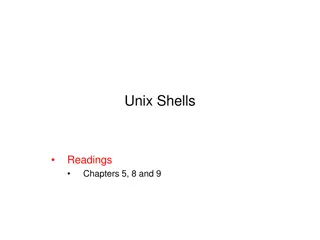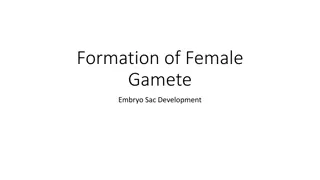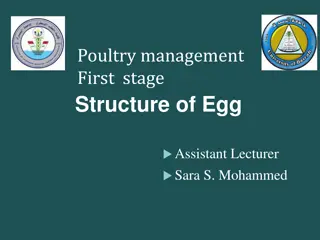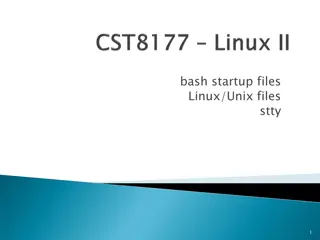Realistic Shell Model Interactions in Nuclei
Bartłomiej Szpak and team from the Polish Academy of Sciences explore the structure of Sb nuclei around 132Sn to test realistic shell model interactions. They propose cluster transfer reactions and conduct calculations around 132Sn using a parameter-free approach. Limited experimental data is available due to the inaccessibility of the region, with insights mainly coming from beta-decay studies and spectroscopic investigations of fission products. The use of triton transfer process induced by radioactive beams on a 7Li target facilitates gamma-ray spectroscopic studies of low-lying structures in nuclei close to the projectile nucleus, offering a method to study states with high angular momentum.
Download Presentation

Please find below an Image/Link to download the presentation.
The content on the website is provided AS IS for your information and personal use only. It may not be sold, licensed, or shared on other websites without obtaining consent from the author.If you encounter any issues during the download, it is possible that the publisher has removed the file from their server.
You are allowed to download the files provided on this website for personal or commercial use, subject to the condition that they are used lawfully. All files are the property of their respective owners.
The content on the website is provided AS IS for your information and personal use only. It may not be sold, licensed, or shared on other websites without obtaining consent from the author.
E N D
Presentation Transcript
Structure of Sb nuclei around132Sn as a testing ground for realistic shell model interactions Bart omiej Szpak Institute of Nuclear Physics, Polish Academy of Sciences, Krak w, Poland B. Szpak, B. Fornal, P. Bednarczyk, M. Ciema a, N. Cieplicka, M. Kmiecik, W. Kr las, A. Maj Institute of Nuclear Physics, Polish Academy of Sciences, PL-31342 Krakow, Poland S. Leoni1,2, S. Bottoni1,2, G. Benzoni2, A. Bracco1,2, F. Crespi1,2 1 Universit degli Studi di Milano, Via Celoria 16, 20133, Italy 2 INFN, sezione di Milano, Italy K. Rusek Heavy Ion Laboratory, University of Warsaw, Poland R. Raabe Instituut voor Kern-en Stralingsfysisca, KU Leuven, Belgium S. Lunardi, D. Bazzacco, S. Lenzi, R. Menegazzo, D. Mengoni, C. Michelagnoli, F. Recchia, C.A. Ur Department of Physics, University of Padova and INFN, Padova, Italy G. de Angelis, D.R. Napoli, J. Valiente-Dobon, INFN, Laboratori Nazionali di Legnaro, Legnaro, Italy G. de France, E. Clement, C. Michelagnoli GANIL, Caen, France
Cluster transfer reactions We propose a method for gamma-ray spectroscopic studies of low- lying structures in nuclei lying close to the projectile nucleus. The method relies on the triton transfer process induced by radioactive beams on a7Li target. AX + 7Li A+3-xY+ +xn Z Z+1 for example: 134Sb 133Sn + 7Li 134Sb+ +2n 133Sn
Realistic shell model calculations around 132Sn The realistic shell model calculations have opened a new chapter in nuclear structure physics. Parameter-free calculations around doubly-magic nuclides become possible. No adjustment of interaction is necessary to obtain the excellent agreement with the experimental data. The nuclides from the vicinity of132Sn and208Pb provide the best data to test the experiment against theoretical predictions. However the experimental information is very sparse. L. Coraggio, A. Covello, A. Gargano, N. Itaco, PRC 80, 021305(R) (2009)
Available experimental information The situation results from the inaccessibility of the region in standard fusion- evaporation or deep-inelastic reactions with stable projectiles and targets. What little is known comes mainly from beta-decay studies or spectroscopic investigations of fission products. 132Sb L. Coraggio et. al. PRC 66, 064311 (2002)
Cluster transfer reactions The nuclei of interest will be populated in a reaction: 7Li(ASn, 2n)A+1Sb There is a significant probability of a7Li beam nucleus breaking up, with a triton being captured while particle is emitted. Reaction offer access to states at relatively high angular momentum. Dasgupta et. al. PRC 66, 041602(R) (2002) Clark et. al. [Cla] investigated formed in reactions involving7Li beams on targets of160Gd and184W. cross-section for the (7Li, 2n) process at beam energies of a few MeV above Coulomb barrier is of order of 100 mb exceeds by 1-2 orders of magnitude the predictions of a standard fusion-evaporation model can be explained by using the Wilczynski binary transfer model + standard evaporation model. [Cla] R. M. Clark et. al. PRC 72, 054605 (2005) the population of nuclei Fusion-evaporation Incomplete fusion
Cluster transfer reactions Recently, excited states in123,125Sb with spins up to 23/2 have been studied following the incomplete fusion reaction at beam energy of 35, 37 MeV. The (7Li, 2n) incomplete fusion reactions have been used to populate states in121,123Sb [Wat] and in179Hf [Mul]. high-spin 122,124Sn(7Li, 2n)123,125Sb [Wat] H. Watanabe et. al. PRC 79, 024306 (2009) [Mul] S. M. Mullins et. al. PRC 61, 044315 (2000) D. S. Judson et. al. PRC 76, 054306 (2007) 125Sb
Our REX-ISOLDE experiment (November 2012) Spectroscopy of n-rich 98-100Sr nuclei with 7Li(98Rb,axn) reaction at 3MeV/u Spokepersons: S. Leoni and B. Fornal 98Rb + 7Li 101-xSr+ +xn 98Sr99Sr100Sr 98 Rb 133 Collaboration: Univ. of Milan, IFJ PAN Krak w, SLCJ Warsaw, GANIL, LNL Legnaro, Univ. of Padova, K.U.Leuven, Universit Libre de Bruxelles, CSNSM Orsay, Univ. of K ln, TU Darmstadt, TU Munchen, LPSC Grenoble, Argonne Nat. Lab., IFIN-HH Bucharest, IRNE-BAS Sofia, ISOLDE CERN.
REX-ISOLDE experiment Cluster transfer reactions of radioactive beams 98Rb/98Sr on a on a 1.5 mg/cm2thick LiF target [Bot]. Beam for 3 days. Ebeam=2.85 MeV/A I=2x104pps MINIBALL + T-REX setup [Bot] S. Bottoni et. al. Acta Phys. Pol. 45 (2014) -transfer t-transfer
Experimental setup TRACE Array for light charged particle ejectiles - Tracking ASn beam 500-600 MeV A+1Sb ASn 7Li A+1Sb* -rays 7Li target AGATA
Details of an experiment Beam energy: Target thickness: 1 mg/cm2 We assume : 100 mb for the (7Li, 2n) channel cross-section 50% efficiency of AGATA array triggered by charged particle detector 500-600 MeV Element particles/s 127Sn 8.16E+08 128Sn 6.36E+08 129Sn 3.50E+08 130Sn This gives: 1.58E+08 131Sn 6.83E+07 Few thousands of gamma singles or double gamma coincidence events per second for 127-130Sn beam For the reaction induced by the leading to132Sb recorded gamma-gamma events will be of the order of few hundreds per second 132Sn 3.11E+07 133Sn 2.76E+06 131Sn beam For a133Sn beam we get one order of magnitude lower for the counting rate for134Sb.
Advantages of the proposed experiment downstream in a very small recoil cone, thus Doppler correction do not require recoil detection. The very inverse kinematics guarantees that the product nuclei all travel of an particle. Reaction channel of interest will be uniquely associated with the emission appreciable yield the Te nuclei with A=129-136. The emitted protons may be used as event tags. The same reactions in their7Li(ASn,pxn)ATe channel will also populate with Presented counting rate estimates give us confidence that detailed gamma-ray spectroscopic studies of the low lying structures in127-132Sb will be possible at SPES.
